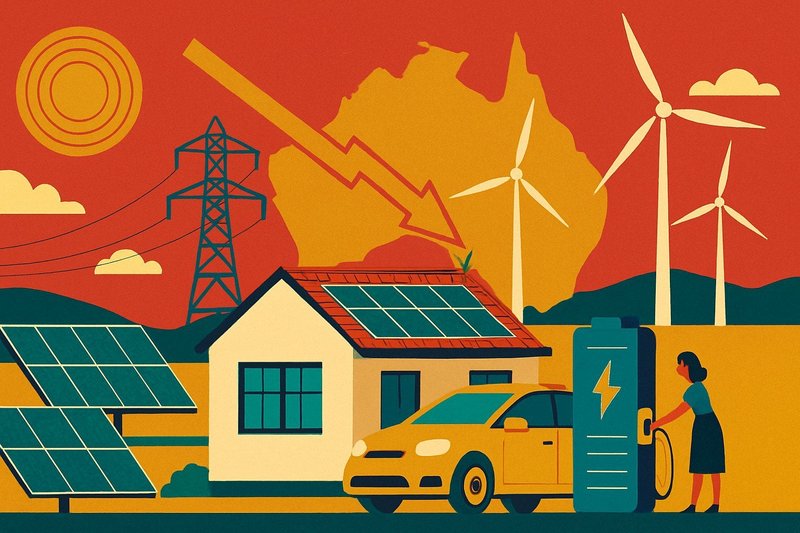It seems extraordinary that Australia has recently had a political tussle over the need for nuclear power plants in this country at the same time that the renewable combination of solar and batteries is dropping in price so rapidly.
While it is true that even sunny Australia is likely to always need to have alternative forms of electricity generation, the falling price of the solar/battery combination makes it an almost unbeatable answer to the electrification revolution.
Figures produced by BloombergNEF show that the cost of Chinese solar modules fell below US 10c a watt last year, with the cost of batteries also falling sharply.
We are starting to see what that means in the Australian grid with three successive large battery projects gradually coming online to soak up cheap solar power during the day and spit it back out during the evening and morning peaks.
Ulinda Park near Millmerran in Queensland is rated at 150 MW and 300 MWh and can be expanded later, while two other battery units, each rated at around 200 MW and 567 MWh, at Plumpton on Melbourne’s western outskirts, are part of the large and still rapidly expanding Melbourne Renewable Energy Hub, which is partly funded by the reformatted State Electricity Corporation (SEC).
Renewables hitting record production
With wind and solar electricity production now often setting new records in Victoria, NSW, and Queensland as new generation projects come online, the continuing addition of new batteries will move the Australian grid further along the path to renewable power being supplied around the clock.
Individual households with solar panels are also being encouraged by subsidies to fit home batteries and all of these efforts will certainly be needed if Victoria is to reach its goal of having renewables provide 95% of the state’s power by 2035.
Despite higher power bills, power costs are falling fast
What has been obscured somewhat by a confusing and expensive retail electricity supply network that lumps all sorts of supply charges, daily fees and retail margins into electricity bills is that actual wholesale power costs are being relentlessly cut as more wind, solar and storage are added to the national grid.
With the cost of solar and battery storage still falling fast, the ability to supply renewable power around the clock will broaden out the downward pressure on power prices and allow heavy power users such as data centres and smelters the opportunity to reduce costs.
South Australia is further down this track than the other states, regularly producing 100% of the state’s power needs from renewables.
As interconnectors between states and between renewable production areas are improved, the possibilities of dramatically reducing power prices will become much more apparent.
Solar houses showing the way
Households using solar power to charge batteries and operate electric cars are showing the way to a future with much lower power bills.
The ability to add ever cheaper renewables to the grid will allow it to expand easily to accommodate the continuing electrification of road transport and many industrial uses for low-cost power.
Embracing a future with plentiful electricity
It is an exciting future that sunny and windy Australia needs to continue to wholeheartedly embrace, without the distractions of considering the as-yet unavailable and undoubtedly very expensive small modular nuclear power plants.
The economic benefits of importing less fossil fuels to power our car and truck fleet are also a worthwhile aim, which was literally inconceivable just a few short years ago.
As prices of the main components for renewable power continue to fall, the real question we should be asking is not how we generate our power, but what we are going to do with excess power as it becomes progressively cheaper and more available around the clock.
